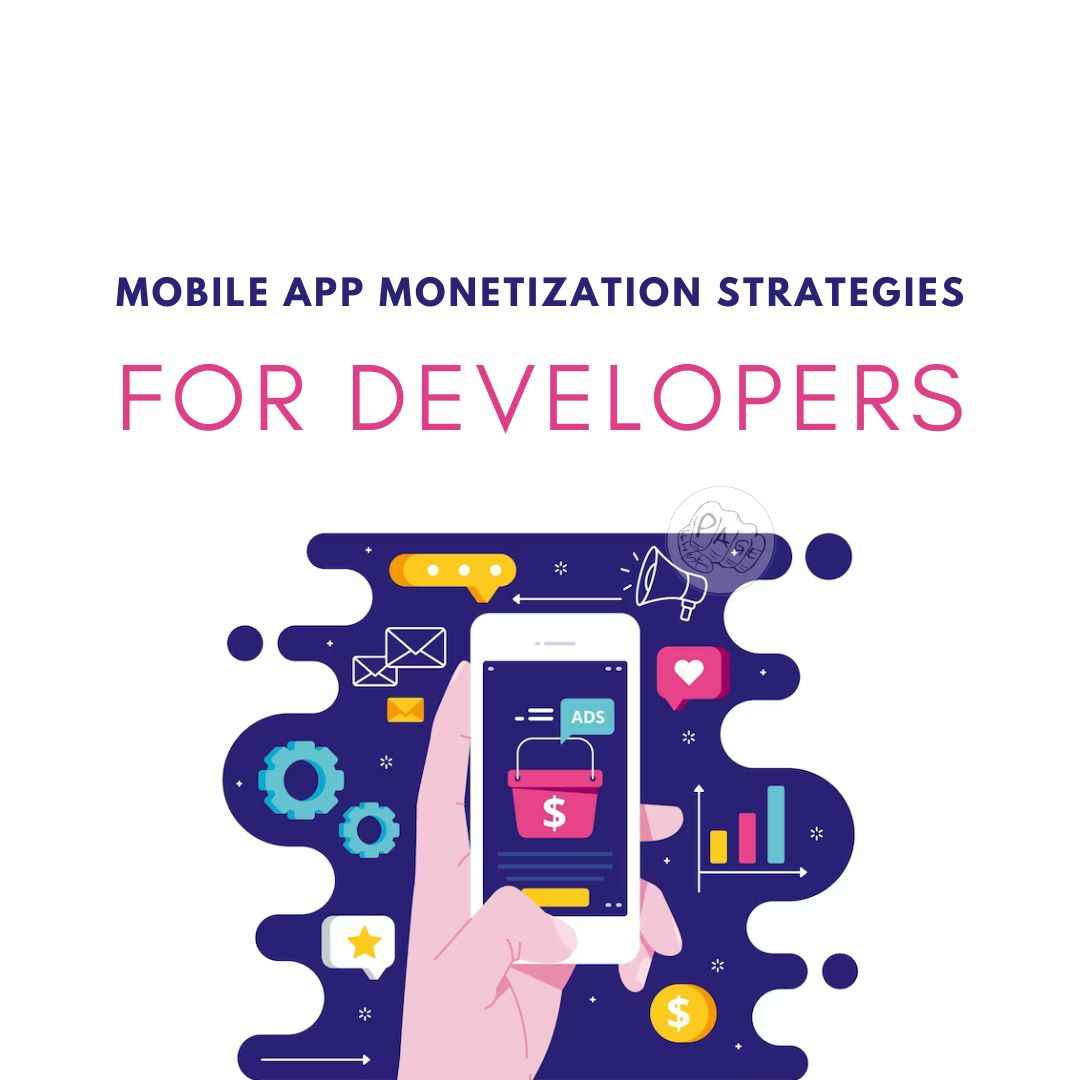Mobile App Monetization Strategies for Developers
Explore effective Mobile App Monetization Strategies for Developers to maximize revenue and user engagement in the app economy. Learn how to strike the right balance between monetization and user experience.
Sep 28, 2023 03:23 PM

Maximizing Revenue in the App Economy
Introduction
Are you a mobile app developer looking to turn your passion into profit? Well, you're in the right place! In this digital age, where smartphones have become extensions of our hands, mobile apps have taken center stage. They're not just about convenience or entertainment anymore; they're also big business. But to ride the monetization wave successfully, you need some killer strategies in your arsenal.
So, fellow developers, buckle up as we dive deep into the world of mobile app monetization. We're going to explore strategies that will not only help you make a tidy sum but also enhance your users' experience. Let's turn those lines of code into dollar signs!
Understanding the App Monetization Landscape
Before we delve into the strategies, it's crucial to grasp the lay of the land. Mobile app monetization is a multifaceted domain with various models and techniques. Here's a quick overview:
-
In-App Advertising: Displaying ads within your app is one of the most common monetization methods. You can earn revenue through clicks, impressions, or even interactions with these ads.
-
In-App Purchases (IAPs): This involves selling virtual goods, premium features, or subscriptions within your app. Users can buy these items to enhance their experience.
-
Freemium Model: Offer your app for free with basic features, but charge users for advanced features or content. This entices users to upgrade.
-
Subscription Model: Users pay a recurring fee to access premium content or features. This provides a steady stream of revenue.
-
Pay-Per-Download: Charge users a one-time fee to download your app. This model is less common but can be lucrative for high-quality apps.
-
Affiliate Marketing: Promote products or services within your app and earn a commission on sales generated through your referrals.
Now that you're acquainted with the landscape, let's explore some killer strategies to maximize your earnings.
1: Nail User Acquisition
User acquisition is the cornerstone of mobile app monetization. After all, if you don't have users, who's going to pay for your offerings? Here's how to nail it:
-
Leverage App Store Optimization (ASO): Optimize your app's title, description, and keywords to rank higher in app store search results. Appearing at the top increases visibility and downloads.
-
Use Social Media: Promote your app on social media platforms to reach a broader audience. Engage with potential users, run contests, and create buzz.
-
Landing Page: Create an enticing website or landing page for your app. This helps build credibility and provides a platform to showcase your app's features.
2: Enhance User Engagement
Once you've acquired users, the next step is to keep them engaged. Engaged users are more likely to spend money on your app. Here's how to do it:
-
Push Notifications: Send relevant, non-intrusive push notifications to remind users about your app. Highlight new features or exclusive offers.
-
Personalization: Tailor the user experience by offering personalized content and recommendations. Users are more likely to engage when they feel the app understands their preferences.
-
Gamification: Add elements of gamification to make the user experience fun and addictive. Reward users for completing tasks or achieving milestones.
3: In-App Advertising
In-app advertising is a goldmine when done right. It's important to strike a balance between monetization and user experience. Here's how:
-
Native Ads: Integrate ads seamlessly into your app's design. Users are more likely to engage with ads that don't disrupt their experience.
-
Rewarded Videos: Offer users rewards like in-game currency or premium content in exchange for watching video ads. This incentivizes users to engage with ads willingly.
-
Frequency Capping: Don't bombard users with ads. Implement frequency capping to limit the number of ads users see in a session.
4: Mastering In-App Purchases
In-app purchases (IAPs) can be a goldmine for your app. Here's how to make it work:
-
Offer Value: Ensure that your in-app purchases provide real value to users. Whether it's virtual goods or premium features, users should feel like they're getting their money's worth.
-
Clear Pricing: Be transparent about pricing. Avoid hidden costs and make it easy for users to understand what they're paying for.
-
Limited-Time Offers: Create a sense of urgency with limited-time offers. Users are more likely to make a purchase if they feel they might miss out.
5: Freemium Done Right
The freemium model can be a win-win if executed correctly. Here's how to strike that balance:
-
Essential Free Features: Ensure that the free version of your app offers valuable features. Users should find it useful even without upgrading.
-
Tease Premium Features: Showcase the benefits of the premium version within the free app. Let users see what they're missing out on.
-
Timely Prompts: Prompt users to upgrade at strategic points, such as when they hit a usage limit or try to access a premium feature.
6: Subscription Magic
Subscriptions can be a steady source of income. Here's how to work your subscription model:
-
Tiered Plans: Offer different subscription tiers with varying levels of access. This caters to a broader audience and allows users to choose the best fit.
-
Free Trial Period: Give users a taste of the premium experience with a free trial. This lowers the barrier to entry.
-
Auto-Renewal: Implement auto-renewal for subscriptions to ensure a continuous stream of revenue.
7: Pay-Per-Download Strategies
If you opt for the pay-per-download model, make sure you stand out in the crowd:
-
Demo Version: Provide a demo or lite version of your app for free. Let users try it out before making the purchase.
-
Regular Updates: Keep your app fresh with regular updates and improvements. This adds value and encourages positive reviews.
-
Price Drops: Periodically offer discounts or price drops to entice potential buyers.
8: Affiliate Marketing
Affiliate marketing can be a lucrative side hustle for your app. Here's how to get started:
-
Choose Relevant Partners: Partner with companies or products related to your app's niche. The connection should make sense to users.
-
Transparent Disclosure: Clearly disclose affiliate links or promotions to maintain trust with your audience.
-
Performance Tracking: Use affiliate marketing platforms to track your referrals' performance and optimize your strategy accordingly.
Conclusion
There you have it, fellow developers – a treasure trove of mobile app monetization strategies to boost your revenue while keeping your users happy. Remember, the key is to find the right balance between monetization and user experience.
Don't be afraid to experiment with different strategies and adapt them to your app's unique niche and audience. Keep an eye on user feedback and continually refine your approach.
In this competitive app economy, success goes to those who understand their users, provide value, and stay agile. So, go ahead, implement these strategies, and turn your mobile app into a cash cow. Mobile App Monetization Strategies for Developers are your ticket to financial success in the digital age. Good luck, and happy coding!
Share This Post
Related Articles
How to Create Locally Optimized Keywords
Learn how to resonate with your local audience, dominate search results, and boost your online visibility. From mastering Google My Business to creating compelling location-specific content, discover the strategies that will elevate your local SEO game.
Social Media Magic: How to Skyrocket Your Business with Digital Marketing
Discover the enchanting world of social media marketing and learn how to harness the magic of digital marketing to skyrocket your business. From Facebook to TikTok, this guide will show you the secrets to success in 2023!
How to Improve Marketing Skills for 2024
Learn how to enhance your marketing skills for 2024 in this comprehensive guide. Explore the latest trends, core principles, and strategies to succeed in the evolving marketing landscape.
What is Channels in Digital Marketing?
Channels in digital marketing are the ways that marketers use to reach and communicate with their target audiences online. Some examples of channels are websites, social media, email, search engines, and online advertising. Each channel has its own advantages and disadvantages, depending on the goals, budget, and preferences of the marketer. Channels can also be combined and integrated to create a more effective and cohesive digital marketing strategy.
12 Ways on How to Make Money Online in India
Discover the top 12 ways to make money online in India, from Google AdSense to affiliate marketing and beyond. Learn how to start earning today!
Related FAQ
No related FAQ.
Say Hello
To Your Dream




